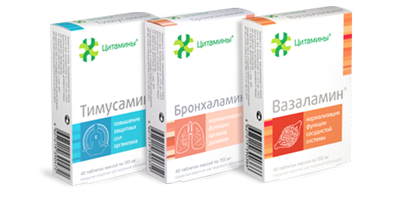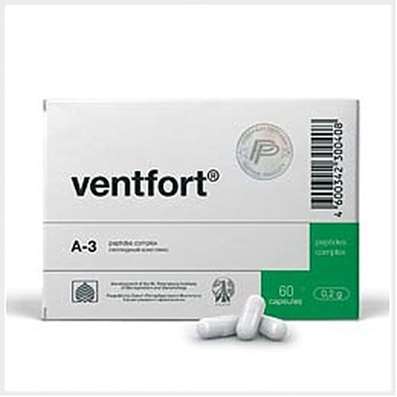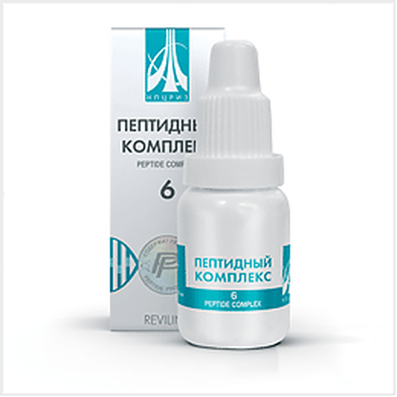Instruction for use: Ipramol Steri-Neb
I want this, give me price
Active substance: Ipratropium bromide + Salbutamol
ATX Code R03AK04 Salbutamol + Sodium cromolyn
Pharmacotherapeutic group:
Beta-adrenergic agonist in combination
The nosological classification (ICD-10)
J44.9 Chronic obstructive pulmonary disease, unspecified
Obstructive pulmonary diseases, Bronchial obstruction, bronchial obstruction, Exacerbation of chronic obstructive pulmonary disease, reversible airflow obstruction, Reversible airway obstruction, panbronchiolitis, Panbronhit, COPD, Chronic pulmonary infection, Chronic infection of the lower respiratory tract, Chronic obstructive pulmonary disease, Chronic obstructive pneumonia, Chronic lung disease, Chronic obstructive pulmonary disease, Chronic bronchopulmonary disease, Chronic broncho-pulmonary diseases, Airway obstruction
J45 Asthma
Asthma physical effort, status asthmaticus, Bronchial asthma, Asthma lung flow, Bronchial asthma with obstruction of sputum discharge, Bronchial asthma heavy currents, Bronchial asthma physical effort, hypersecretory asthma, Hormone-dependent form of bronchial asthma, Relief of asthma attacks in bronchial asthma, Non-allergic asthma, nocturnal asthma, Exacerbation of asthma, Asthma attacks, Endogenous forms of asthma, Night asthma, Cough with bronchial asthma
J98.8.0 * Bronchospasm
Bronchospasm in bronchial asthma, Bronchospasm when exposed to an allergen, bronchospastic reactions, bronchospastic status, bronhospastichesky syndrome, Diseases accompanied by bronchospastic syndrome, reversible bronchospasm, spasmodic cough
Composition
A solution for inhalation 1 amp.
active substance:
ipratropium bromide monohydrate (in terms of ipratropium bromide), 0.5 mg
3 mg of salbutamol sulphate
(Equivalent to 2.5 mg of salbutamol)
Excipients: sodium chloride - 22.5 mg; hydrochloric acid - to pH 3,5; Water for Injection - 2.5 ml
Characteristic
Clear liquid from colorless to pale yellow.
Pharmacological Properties
Pharmachologic effect
bronchodilator.
pharmacodynamics
Combined preparation with marked bronchodilator effect due to the action of a part of ipratropium bromide and salbutamol.
Ipratropium bromide is an anticholinergic. Does m-cholinergic receptors of the smooth muscle of the tracheobronchial tree (mainly large and medium bronchi), inhibits bronchoconstriction reflex, reduces the secretion of the glands of the respiratory tract mucosa. Having structural similarity to acetylcholine molecule, it is a competitive antagonist. It effectively prevents the narrowing of the bronchi, resulting from the inhalation of cigarette smoke, cold air, the effect of different bronhospazmiruyuschih agents, as well as eliminates bronchospasm associated with the influence of the vagus nerve.
Salbutamol is a beta2-adrenergic agent has an effect on airway smooth muscle, causing it to relax and prevent bronchospasm. It reduces the resistance in the airways, increasing lung capacity. It prevents the release of histamine, leukotrienes and PGD2 other biologically active substances from mast cells. At the recommended therapeutic doses has no adverse effect on the cardiovascular system, does not cause increase in blood pressure. To a lesser extent, compared with the group PM has a positive chronotropic and inotropic effects. It is an extension of the coronary arteries.
Joint inhalation of salbutamol and ipratropium bromide provides simultaneous local effect on muscarinic and beta2-adrenergic receptors of the lungs, resulting in enhanced bronchodilator effect. Systemic absorption together with inhalation of salbutamol and ipratropium bromide, does not increase.
Pharmacokinetics
Ipratropium bromide is quickly absorbed after inhalation however systemic bioavailability leaves less than 10% received doses. Plasma protein binding (mostly to albumin and glycoprotein) - 9%. 46% of the drug is excreted by the kidneys. T1 / 2 is about 1.6 hours after i / v injection. Ipratropium bromide does not penetrate the blood-brain barrier.
Salbutamol is rapidly and completely absorbed following inhalation. Salbutamol Cmax in plasma observed after 3 hours Plasma protein binding -. 10%. It undergoes first-pass metabolism in the liver and gut wall. T1 / 2 3-7 h leaves. Excreted by the kidneys, mainly unchanged (30% of dose in 24 h) and in an inactive metabolite fenolsulfatnogo within 72 h and in the bile. Salbutamol penetrates through the BBB, producing a concentration equal to about 5% of the plasma concentration.
Indications of the drug Ipramol Ster-Neb
Bronhospastichesky syndrome in patients with COPD and asthma.
Contraindications
hypersensitivity to salbutamol, ipratropium bromide, atropine or a derivative thereof;
hypertrophic obstructive cardiomyopathy;
tachyarrhythmia;
pregnancy (I term);
children's age (12 years).
Precautions: angle-closure glaucoma; obstruction of the urinary tract (including on the background of benign prostatic hyperplasia); expressed by organic diseases CCC; pheochromocytoma; hyperthyroidism; insufficiently controlled diabetes mellitus; cystic fibrosis; myocardial infarction (recent history); pregnancy (II-III trimesters); lactation.
Pregnancy and breast-feeding
It is not recommended to prescribe a drug Ipramol Ster-Neb in II and III trimester of pregnancy and breastfeeding, unless the expected benefit to the mother outweighs any possible risk to the fetus and infant.
Side effects
Often (≥1 / 100, but <1/10)
CNS: headache.
Cardio-vascular system: palpitation, tachycardia.
From the digestive tract: dry mouth, nausea.
From the respiratory system: cough, dysphonia.
From the sensory organs: disturbance of accommodation (if splashed in the eyes).
Uncommon (≥1 / 1000 but <1/100)
CNS: dizziness, excessive fatigue, tremor, paraesthesia, insomnia, nervousness.
Cardio-vascular system: increased Sad, arrhythmia.
From the digestive tract: vomiting, taste perversion, diarrhea.
From the musculoskeletal system: tremor.
With the genitourinary system: urinary retention, dysuria.
Rare (≥1 / 10,000, <1/1000)
CNS: poor coordination of movements, disorders of the psyche and psychotic reactions (such as dysphoria, impaired memory, anxiety, depression).
Allergic reactions: angioedema swelling of the tongue, lips, face, skin rash (including rash, up to a giant), laryngospasm, bronchospasm, pruritus, anaphylactic shock.
Cardio-vascular system: decrease in DBP.
From the respiratory system: nasal congestion, wheezing, paradoxical bronchospasm, dyspnea.
Metabolism: hypokalemia, hyperglycemia.
From the musculoskeletal system: myalgia, muscle cramps, muscle weakness, arthralgia.
From the senses: the eye contact may increase intraocular pressure, acute eye pain, disturbance of the visual acuity, mydriasis, scleral injection, conjunctival hyperemia, angle-closure glaucoma.
Other: alopecia, sweating.
Interaction
The combined use of additional beta2-agonists, corticosteroids, anticholinergics and xanthine derivatives may enhance the effect of bronchodilator drug Ipramol Ster-Neb to the respiratory tract and cause serious side effects.
If concomitant treatment of beta-blockers may experience a significant reduction in the effectiveness of the drug.
MAO inhibitors and tricyclic antidepressants may enhance the effect of beta-adrenergic salbutamol and lead to a sharp decrease in blood pressure.
Inhalation anesthesia with anesthetic agents containing halogenated hydrocarbons, such as halothane, enflurane, and trichlorethylene, can exacerbate the adverse effects of beta2-adrenoceptor agonists on the cardiovascular system, thereby requiring careful monitoring of the patients. Alternatively, you can stop using the product Ipramol Ster-Neb prior to surgery.
Theophylline and other xanthines increases the risk of tachyarrhythmia.
The drug Ipramol Ster-Neb gipokaliemicheskogo due to the effect of salbutamol can increase the effects of CNS stimulants, increase the likelihood of glycoside intoxication, strengthen kardiotropnoe effect of thyroid hormones.
Possible increase in heart rate and blood pressure in patients receiving the drug Ipramol Ster-Neb may require dose adjustment of antihypertensive and antianginal drugs.
Diuretics and corticosteroids increase hypokalemic effect of salbutamol.
Anticholinergic drugs increase the risk of increased intraocular pressure.
Dosing and Administration
Inhalation using inhalers, nebulizers (see. "Cautions" The technique of using drugs) or the system for non-invasive ventilation in positive pressure mode in the respiratory tract.
Adults, including elderly patients and children over 12 years - 1 nebula with a sterile solution 3-4 times a day, in the form of inhalation using a nebuliser.
Children under 12 years: data on the use of the drug Ipramol Ster-Neb in children under 12 years are not available.
Overdose
Manifestations of overdosage with ipratropium bromide are unlikely due to the low systemic absorption following inhalation or ingestion. As a result, all the manifestations of overdose associated with systemic salbutamol.
Symptoms include headache, nausea, vomiting, angina pectoris, hypertension, hypotension, hypokalemia, hyperkalemia, tachycardia, arrhythmia, chest pain, tremor, flushing, anxiety, hallucinations and dizziness.
Treatment: symptomatic, including the introduction of cardioselective beta-blockers. Note, however, that these drugs may increase the bronchospasm.
special instructions
To prevent overdose, do not exceed the maximum daily dose. Patients should be instructed on the correct use of the drug Ipramol Ster-Neb via nebulizer and cautioned against getting a solution or spray into the eyes.
In patients with asthma or COPD moderate forms of symptomatic treatment may be preferable to regular use.
It is necessary to further analyze the connection or strengthening anti-inflammatory therapy to control airway inflammation in patients with steroid-dependent asthma and COPD.
The regular use of high doses of beta2-agonists, including in a preparation Ipramol Ster-Neb, to control symptoms of bronchial obstruction may worsen the disease. With an increase in bronchial obstruction simply increasing the dose Ipramol Ster-Neb for a long period of time is impractical and even dangerous.
To prevent life-threatening deterioration of disease should review the patient's treatment plan, and in particular the adequacy of anti-inflammatory drugs, corticosteroids drugs. In the application of the solution for inhalation based on ipratropium bromide with beta 2-agonists are rarely encountered cases of acute angle-closure glaucoma. Pain or discomfort in the eyes, blurred vision, the appearance characteristic of glaucoma halo combined with eye redness, edema (from conjunctival to corneal) can be regarded as signs of acute angle-closure glaucoma. If these symptoms persist, you should begin treatment miotikami in the form of eye drops and immediately be examined by a specialist.
It should be explained to the patient that in the case of acute, rapidly worsening dyspnea or explicit reduction reaction to the drug should consult a doctor.
Treatment of beta2-agonists may cause severe hypokalemia. Particular caution should be exercised in cases of severe airflow obstruction, as the appearance of hypokalemia can contribute to concomitant treatment with xanthine derivatives, diuretics and corticosteroids. Hypokalemia can lead to an increased risk of arrhythmias in patients receiving digoxin. Additionally, hypoxia may aggravate the effects of hypokalemia on cardiac rhythm. In such situations, it is recommended to check the concentration of potassium in the blood serum.
In patients with cystic fibrosis drug Ipramol Ster-Neb should be administered with caution due to the fact that the possible occurrence of symptoms of gastrointestinal dysmotility. Such patients should be alerted about the need to tell your doctor about any changes in gastrointestinal function.
If relief of symptoms of bronchial obstruction (or bronchospasm) requires The larger dose than recommended, it is necessary to revise the plan patient treatment.
Effects on ability to drive and operate machinery. Data on the effects on the ability to drive vehicles and / or other mechanisms are absent. However, given the possibility of side effects from the CNS during treatment Ipramol Ster-Neb should be careful when driving vehicles and occupation of potentially hazardous activities that require high concentration and psychomotor speed reactions.
The technique of using the drug
1. Before you use the drug you must read the instructions nebulizers producer.
2. Prepare the nebulizer according to its manufacturer's instructions.
3. Hold the vial vertically cap broken off the cap
4. Squeeze the solution in the nebulizer reservoir
5. Use the nebulizer according to its manufacturer's instructions.
6. Rinse your mouth after inhalation is complete.
7. If you use a mask, wash your face.
8. The solution remaining in the nebulizer chamber unused should be discarded.
9. Wash the nebulizer.
10. When using the drug should be avoided eye contact solution.
release Form
Solution for inhalation, 0.2 mg + 1 mg / ml. 2.5 ml of the drug in LDPE vials. On 5 amp. welded together as a unit. On 1 block in the laminated foil. 4 or 12 units in a carton box.
Conditions of supply of pharmacies
On prescription.
Storage preparation
In the dark place at a temperature no higher than 25 ° C (do not freeze).
Keep out of the reach of children.
The shelf life
2 years.
Do not use beyond the expiration date printed on the package.

 Cart
Cart





